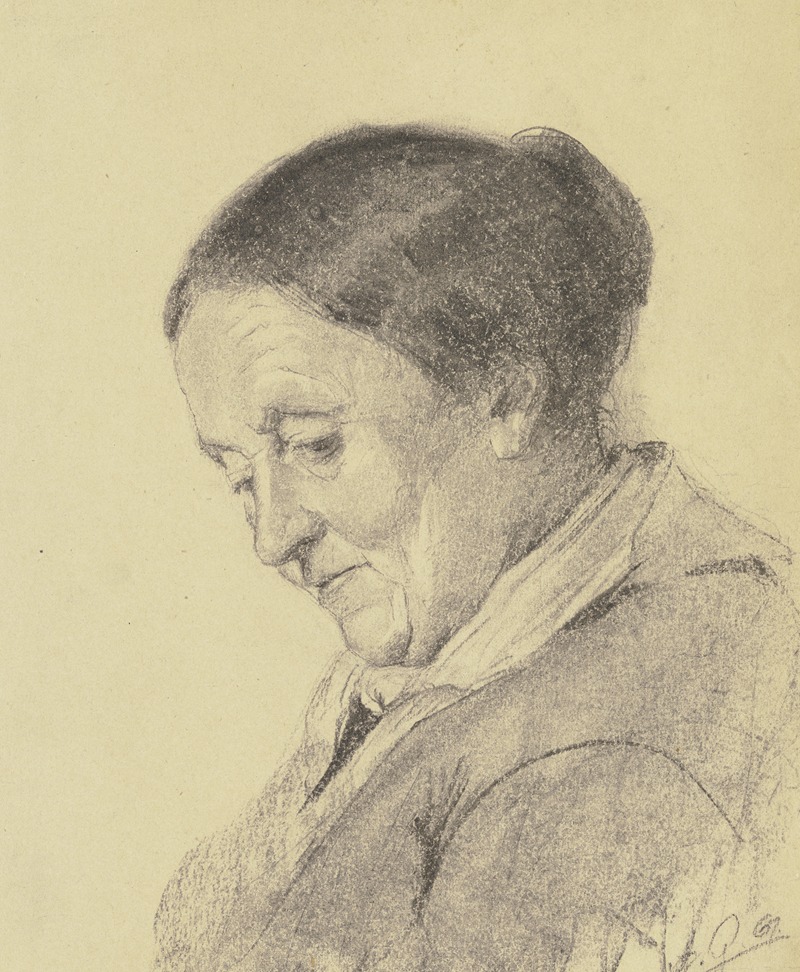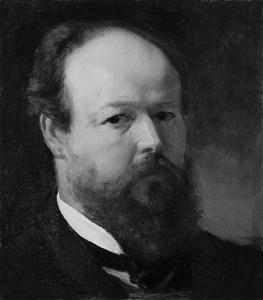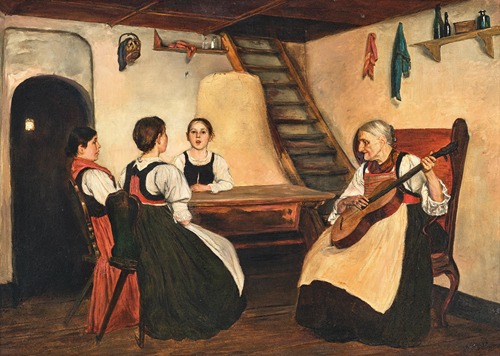

Alois Gabl was an Austrian painter and draftsman .
Gabl came from a family of bakers and had several siblings. After only attending school for a short time, he earned his living in his uncle's business. Since he could hardly afford private lessons, Gabl tried to teach himself how to draw. When the Prince-Bishop of Brixen Vinzenz Gasser became aware of him, he offered Gabl an annual scholarship of 100 guilders.
In October 1862, at the age of 17, Gabl was able to go to the art academy in Munich as a student. His teachers were there, among other things: Johann von Schraudolph, Arthur von Ramberg and Karl Theodor von Piloty. According to his patron's wishes, Gabl was to receive special training in church painting from Schraudolph. Gabl later switched to Ramberg and then to Piloty because he liked history and genre painting much more.
According to his own admission, his compatriots and painters Franz Defregger and Mathias Schmid had a great influence on him. Gabl even used Defregger's picture of Speckbacher as a model for his picture of Haspinger, cheering on the Tyroleans to fight; With this work, Gabl caused a considerable stir at an exhibition in Vienna in 1872.
At the age of 33, the art academy in Munich initially hired Gabl as an assistant teacher, appointed him professor in 1880 and entrusted him with a teaching position. Here Simon Hollósy became one of his students. But as early as 1882, Gabl had to resign from all offices due to illness. No longer able to control himself due to his depression and nervous problems, Gabl tried to kill himself during a stay in his Tyrolean homeland.
Gabl lived the rest of his life in Munich, only interrupted by several hospital and spa stays. During this time, hardly any paintings and only very few drawings were created. At the age of 47, the painter killed himself on March 2, 1893 in Munich. The exact time of death cannot be determined (possibly February 27, 1893 ), as the body was not found until March 4, 1893.
More Artworks by Alois Gabl

